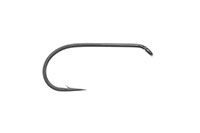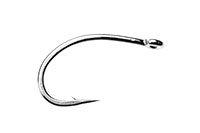
In the Lake MOTOSU --Vol.22--

A brown trout in Lake Motosu. Its huge body is worthy of the name of monster.
Monsters in Lake Motosu in Japan
From the days when I fished rainbow trout in Marunuma, a small lake in Nikkoh (See Vol.19, 20, 21), I had also some concern about Lake Motosu near Mt. Fuji. To be exact, brown trout in Lake Motosu was my concern. Going back further to my student days, I went to Marunuma to fish flat crucian. In those days I often went to Lake Motosu, too. Then I knew rather much more about Lake Motosu than Marunuma.In the middle of 1960' I went to Lake Motosu to fish especially carp, common crucian, Japanese dace, eel and catfish. Apart from common crucian, I caught those fish with only one kind of bait. I mean I used sweet fish as bait that had lived there for ages. In those days there were countless sweet fish in Lake Motosu and they began to lay their eggs in the end of summer. A great number of sweet fish came together to the shallow part and laid eggs. It was a mystical scene, indeed. At dawn sweet fish covered the sand bottom as if short algae covered the lake bottom. Various kinds of fish were swimming around the spawning place. They all came to eat a special dinner.

Mt. Fuji in the morning from Nagasaki. The scene encourages me every time I go fishing to Lake Motosu.
I put a small sweet fish of 10cm to the hook and cast it into the water. Then I caught carp, Japanese dace, eel and catfish. I could not tell in advance which fish would be caught. What I caught most were catfish and Japanese dace. I was not so surprised that catfish was 60cm in average but excited that Japanese dace was over 40cm at least. Usually they grow up around 20cm. Surely sweet fish were a precious dinner for other fish in Lake Motosu. Some years later I heard that brown trout the lake had stocked with grew up to be big fish. That rumour gave me a hint. I saw Japanese dace grow up to be more than 40cm. How big will brown trout grow up to be if they eat those sweet fish? In order to fish those big brown trout I should aim at the spot full of sweet fish. When autumn comes, I am going to check where they lay eggs. ---I had got a feeling as if I had caught brown trout before I went fishing.

The scene of Nagasaki at dawn from very quiet Nagasaki Bay.
A Deep Blue Shoal of Brown Trout
In May 1976, I was standing at the edge of Lake Motosu after long intervals like in the case of Marunuma. I had only a bit of unreliable information that a brown trout of over 50cm was caught. That was why I headed for the tip of my old Nagasaki at first and stood on a big rock to look around. Fish living in the lake usually pass through this area and actually I had seen a lot of big fish---although not trout---here. Soon after my arrival, probably at 10 o'clock in the morning, the breeze ceased and I could see through the water. Lake Motosu is famous for its transparent water today. It was more transparent 20 years ago and fishing seemed even nonsense because I could see through the whole water.About 10 minutes later ripples spread 30m ahead to the centre of the lake. Although fish was nowhere to be seen I stared around there. Soon clouds disappeared and the sunbeam strongly shone into the water. Then I found a big fish swimming slowly to me from the left ahead. What's that? I had never seen that fish in Lake Motosu before. When the iron blue shadow of the fish turned around 25m in front of me I saw clearly its widely split open mouth and adipose fin. Brown trout! It must be a brown trout. It's big, much more than 50cm. And it was not the only thing that surprised me. See! The same size brown trout came swimming slowly to me one by one, keeping some distance from each other. I came to myself and was eager to draw out the line.

In May 1976, it was unusually quiet at the tip of Nagasaki. Standing on that rock I found a lot of brown trout.
I had no time to care whether my fly would reach the fish or not. With momentary flash of #7 bamboo rod, I cast Gray Ghost put to the leader tip as far as possible. After several casting my fly managed to reach the route of the fish. Then the fish coming from a little ahead suddenly changed its route. The same thing happened several times. Those fish seemed to have no interest in my fly at all. I could not give up but continued to cast the fly. About half an hour passed and the lake became quiet again with no shadow of fish. It was my first and last experience to see such a large number of brown trout, all of which were big ones. Ah, that experience drove me to go fishing in Lake Motosu again and again.
In late autumn of the same year I came back to Lake Motosu but only several times. I never forgot about sweet fish as bait there. I made a fly modelled on a sweet fish that needed #2 or #4 hook. I wished to cast such a large fly by all means but in vain. Once I stood at the waterfront the rear bank was too steep and the wind blew very hard. Moreover and first of all, the water was so transparent that I could see through the whole area around the fly that was cast as far as 20m ahead. It is clear that there was no fish about. I wanted to cast the fly farther but could not because the wind blew back the fly when I cast it, using #6 or #7 rod. In short, those average rods at that time were useless. Even when I used a bamboo or glass fibre rod of #9 or #10 that requires all my physical strength, it was almost impossible for me to cast such a large streamer as far as 30m ahead.

In December 1977 the scene of snowstorm in Nagasaki. In autumn there are a lot of spawning beds of sweet fish.
Double Handed Rod
During winter my double-handed rod completely became to fit my hands and I enjoyed swinging it between lessons. It was a bamboo rod, heavy and very soft. I have to accept those characters because it was originally invented for Spey cast. But I wanted to use it in the lake by taking advantage of heavy line. Needless to say, it was almost impossible to catch moving trout with roll cast or Spey cast in such a transparent lake as Lake Motosu. Imagine. Even if I cast the fly to a swimming fish in good timing a splashing sound of the line will drive the fish away. Well, first of all, in most days strong wind will prevent me from casting the line satisfactorily. Fortunately, a turning point came to me when I got #10 and #12 weight forward lines with long belly. It might be unbelievable today but in those days double taper line was fairly common together with the only salmon rod for Spey cast. I put my new weight forward line to the double-handed rod and swung it. Oh, I could easily cast that long line with overhead cast without sagging back cast. I've done it! I can do that. I felt that I got another possibility.Then spring came and no angler seemed to remember Lake Motosu. However, I never forgot that I put my double-handed rod in the car whenever I went near Mt. Fuji.
-- To be continued --
- NET SHOP INFORMATION

SL6 Black Spey Hooks

DU3 Limerick Spinner Hooks

SL4 Single Bartleet Hooks

XD1 Tube Fly Double Hooks

DD2 Flat Perfect Hooks

DD1 Black Terrestrial Hooks

TD4 Old Limerick Wet Hooks

DU1 Silver May Hooks

MU1 Flat Midge Hooks

LD3 Long Limerick Hooks

TD2 Summer Sproat Hooks

XS1 Tube Single Silver Hooks

TD6 Siver Sedge Hooks

SL5 Black Spey Hooks

DU3 Limerick Spinner Hooks
- TROPHY CLUB
- FLY SHOW
- EXHIBITION
- MASTERS`
- FLY DRESSING CONTEST Archives
- TRAVELLER Archives
- TACKLE IMPRESSIONS Archives
- ANGLERS` PHOTO GALLERY Archives
- ----------------------------------------------
- トロフィークラブ
- フライショー
- エキシビション
- マスターズ
- フライドレッシング・コンテスト・アーカイヴ
- トラヴェラー・アーカイヴ
- タックル・インプレッション・アーカイヴ
- アングラーズ・フォトギャラリー・アーカイヴ
株式会社サワダ 185-0021 東京都国分寺市南町3-13-4
SAWADA'S INC. 3-13-4 Minamicho, Kokubunji, Tokyo 185-0021, Japan
写真・ドキュメントの無断転載を禁じます。
All the images and documents found on this site are owned by Ken Sawada and may not be used without permission.
But, link to this site is FREE.
Copyright © 2000 - 2024 SAWADA'S INC.. All rights reserved.
SAWADA'S INC. 3-13-4 Minamicho, Kokubunji, Tokyo 185-0021, Japan
写真・ドキュメントの無断転載を禁じます。
All the images and documents found on this site are owned by Ken Sawada and may not be used without permission.
But, link to this site is FREE.
Copyright © 2000 - 2024 SAWADA'S INC.. All rights reserved.
